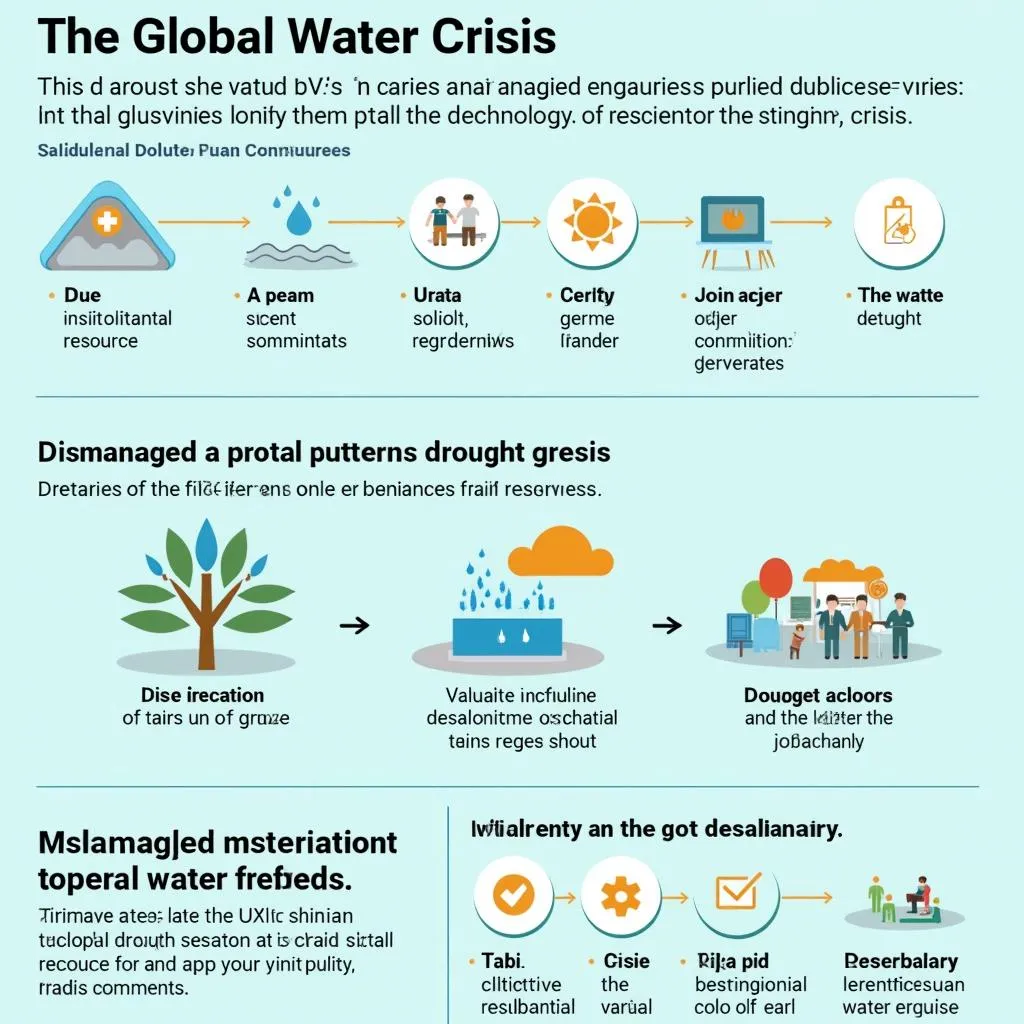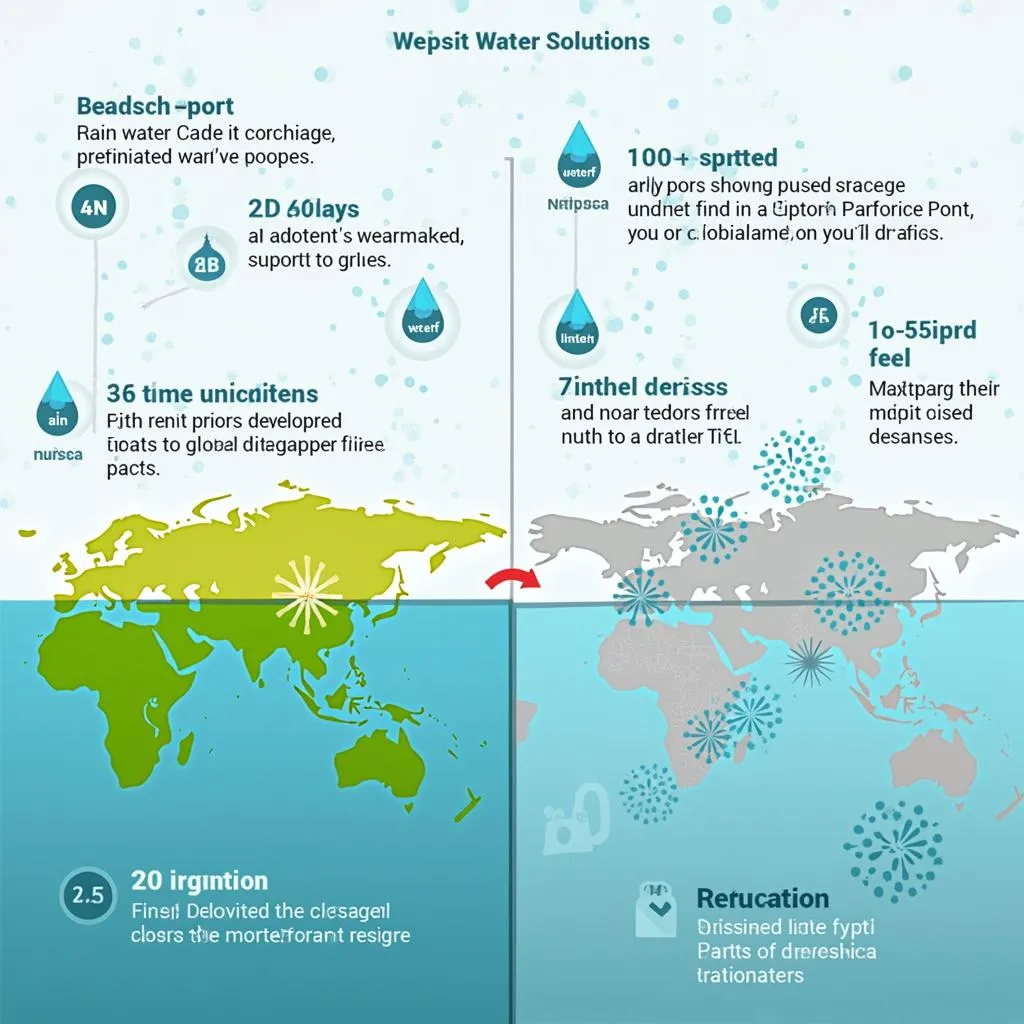Overview of Global Water Crisis and Its Inclusion in PTE Summarize Written Text
In the context of the PTE exam, Summarize Written Text is one of the essential tasks that assesses your ability to understand, condense, and summarize content. One frequently tested topic within the Global Water Crisis involves how technology can both exacerbate and alleviate global water scarcity issues. Our focus here is to provide you with quality PTE-style sample texts based on this topic, offering multiple responses along different proficiency levels.
In doing so, we also optimize the learning experience to help candidates build confidence and accuracy by working with realistic examples.
Sample Summarize Written Text 1: Global Water Crisis Overview
Prompt:
Over the past century, rapid industrialization, population expansion, and shifts in agricultural practices have significantly contributed to the global water crisis. A shrinking supply of clean water has led to many regions experiencing severe drought, with numerous policies and innovations now emphasizing water conservation, desalination, and recycling. Despite technical advancements, however, challenges remain, particularly with unequal access to technological solutions worldwide. Water resource mismanagement, climate change, and poor infrastructure are major pressures worsening current shortages. Experts agree that global efforts must increase in reducing water waste while expanding technologies like solar desalination, smart irrigation, and AI-driven water management systems to restore access to this vital resource.
Task: Summarize the text in one sentence.
Response Based on Different PTE Score Bands
Band 90 (High Proficiency)
Although innovations like solar desalination and AI-driven management offer potential solutions, the global water crisis largely persists due to mismanagement, climate change, and limited technology access, which necessitates urgent global action.
- Content: Fully captures the key elements—technological advancements and ongoing challenges.
- Form: Correct form—between 5 to 75 words.
- Grammar: Advanced and flawless.
- Vocabulary: Use of complex words like “innovations” and “management” enhances clarity.
- Spelling: No issues.
Band 75-80
Technological solutions such as solar desalination and AI-driven water management could help address the global water crisis, but issues like poor management and climate change still limit progress.
- Content: Captures central ideas but misses the urgency of global action.
- Form: Correct word limit.
- Grammar: Mostly correct.
- Vocabulary: Good use of vocabulary, but simpler compared to the higher band response.
- Spelling: No issues.
Band 60-70
Water technologies such as AI-driven management and solar desalination are important, but problems like climate change and mismanagement still make the global water crisis difficult to solve.
- Content: Covers key points but lacks detail on the global scale or urgency.
- Form: Correct length.
- Grammar: Basic sentence structure used.
- Vocabulary: Simple, common terms used rather than academic choices.
- Spelling: Correct.
 Global water crisis overview with emphasis on technological solutions and challenges
Global water crisis overview with emphasis on technological solutions and challenges
Vocabulary and Grammar Breakdown
For candidates looking to expand their vocabulary, here are ten essential words from the sample, along with their definition, pronunciation, and an example in context:
-
Desalination (diˌsæləˈneɪʃən) – the process of removing salt from seawater.
Example: Solar-powered desalination plants provide drinking water to coastal regions suffering from drought. -
Innovations (ɪnəˈveɪʃənz) – new methods, ideas, or products that bring improvement.
Example: Innovations in smart irrigation systems can reduce water usage significantly. -
Mismanagement (mɪsˈmænɪdʒmənt) – inefficient or careless handling of something.
Example: Mismanagement of water resources has exacerbated the crisis in rural areas. -
Infrastructure (ˈɪnfrəstrʌktʃər) – the basic systems and services necessary for a society to function.
Example: Poor water infrastructure often results in massive leakage and wastage. -
Scarcity (ˈskersɪti) – a situation in which resources are limited.
Example: Freshwater scarcity is becoming increasingly common due to population growth. -
AI-driven (ˈeiˌaɪ drɪvən) – controlled or powered by artificial intelligence systems.
Example: AI-driven water management can optimize water distribution for entire cities. -
Drought (draʊt) – a prolonged period of abnormally low rainfall.
Example: Severe droughts across the globe have threatened agricultural productivity. -
Conservation (ˌkɑːnsərˈveɪʃən) – the protection and careful use of natural resources.
Example: Water conservation efforts include efficient usage and awareness campaigns. -
Climate Change (ˈklaɪmət tʃeɪndʒ) – long-term changes in temperature and weather patterns.
Example: Climate change has aggravated water shortages in arid regions worldwide. -
Restoration (ˌrɛstəˈreɪʃən) – the process of bringing something back to its original condition.
Example: Restoration of natural ecosystems can help maintain the water cycle.
Sample Summarize Written Text 2: Technological Interventions in Water Scarcity
Prompt:
Technology plays a dual role in the current water crisis. While industrial advancements and population growth have increased water demand, other technological innovations seek to ease shortages. Highly efficient desalination techniques, advanced rainwater harvesting systems, and AI-based irrigation control offer solutions to reduce stress on global water supplies. However, these advances are often expensive and underutilized, especially in regions where water scarcity is most severe. Therefore, collaboration between governments and the private sector is essential in ensuring that water-scarcity solutions are affordable and widely accessible.
Task: Summarize the text in one sentence.
Response Based on Different PTE Score Bands
Band 90 (High Proficiency)
While technological innovations in water management, such as desalination and AI irrigation, offer promising solutions, they remain costly and inaccessible in the regions most affected by water scarcity, requiring cooperative global efforts.
Band 75-80
Advanced technological solutions, like desalination and AI irrigation control, may help with global water shortages, but they are often too expensive for the regions in need, requiring collaboration to improve accessibility.
Band 60-70
Technology like desalination and AI irrigation can help with water shortages, but it is expensive and not widely used in the regions that need it most.
 Depiction of technological interventions like desalination and AI-driven irrigation in managing water scarcity
Depiction of technological interventions like desalination and AI-driven irrigation in managing water scarcity
Conclusion
As the global water crisis continues to challenge public health and resources, it is a crucial topic in the PTE Summarize Written Text task. Preparing with sample prompts such as those above provides valuable practice in synthesizing complex information succinctly and accurately. For more insights on related topics, see our discussion on Global water scarcity and solutions and Public health and clean water access.
By practicing with these sample prompts, you’ll not only increase your familiarity with PTE test formats but also hone your summarization skills to excel during the actual exam.